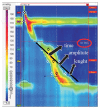Understanding the Chicago Classification: From Tracings to Patients
- PMID: 28866876
- PMCID: PMC5628980
- DOI: 10.5056/jnm17026
Understanding the Chicago Classification: From Tracings to Patients
Abstract
Current parameters of the Chicago classification include assessment of the esophageal body (contraction vigour and peristalsis), lower esophageal sphincter relaxation pressure, and intra-bolus pressure pattern. Esophageal disorders include achalasia, esophagogastric junction outflow obstruction, major disorders of peristalsis, and minor disorders of peristalsis. Sub-classification of achalasia in types I, II, and III seems to be useful to predict outcomes and choose the optimal treatment approach. The real clinical significance of other new parameters and disorders is still under investigation.
Keywords: Chicago classification; Esophageal achalasia; Esophageal motility disorders; High-resolution manometry.
Conflict of interest statement
Figures










References
Publication types
LinkOut - more resources
Full Text Sources
Other Literature Sources

